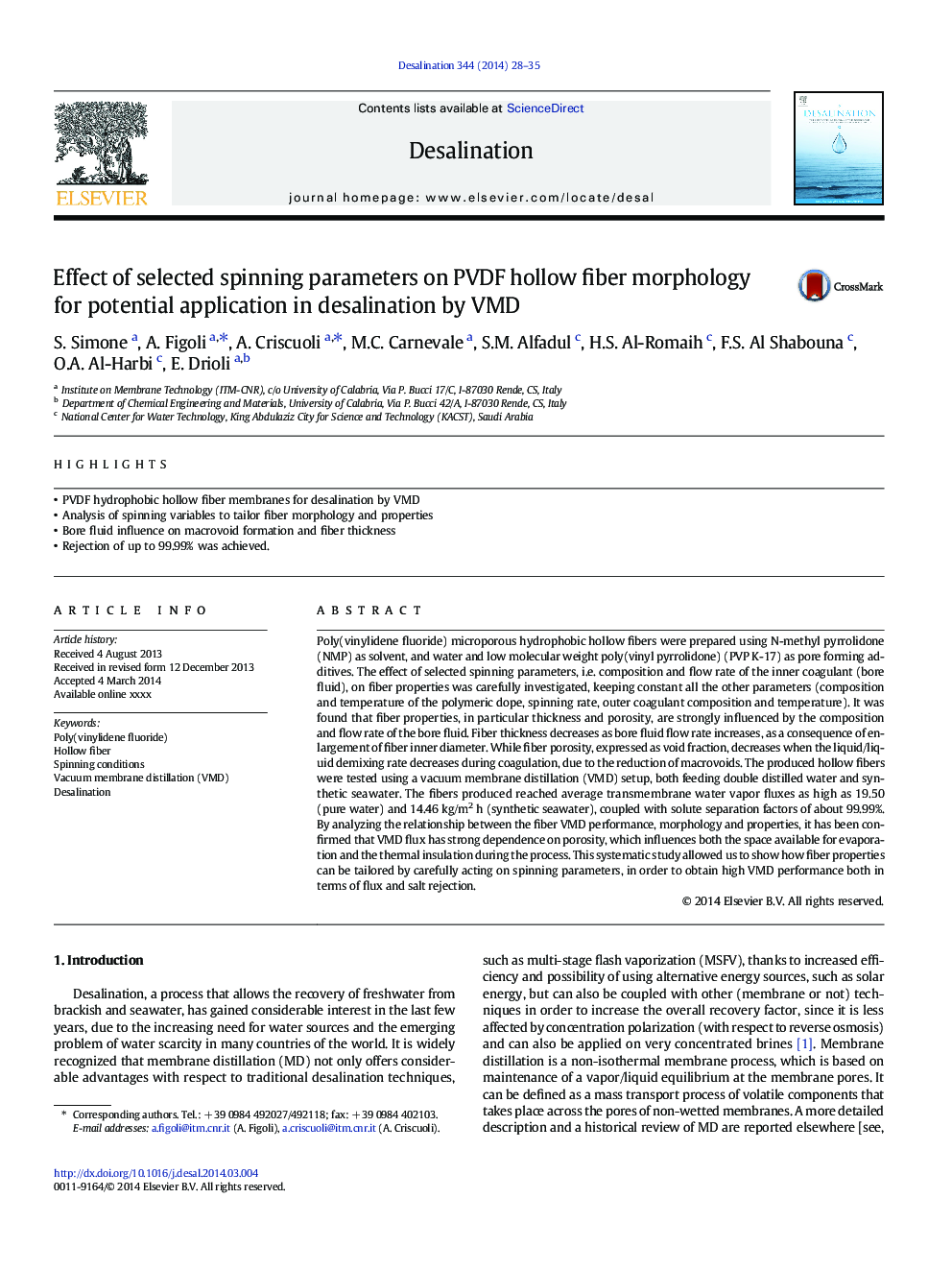| Article ID | Journal | Published Year | Pages | File Type |
|---|---|---|---|---|
| 7008437 | Desalination | 2014 | 8 Pages |
Abstract
Poly(vinylidene fluoride) microporous hydrophobic hollow fibers were prepared using N-methyl pyrrolidone (NMP) as solvent, and water and low molecular weight poly(vinyl pyrrolidone) (PVP K-17) as pore forming additives. The effect of selected spinning parameters, i.e. composition and flow rate of the inner coagulant (bore fluid), on fiber properties was carefully investigated, keeping constant all the other parameters (composition and temperature of the polymeric dope, spinning rate, outer coagulant composition and temperature). It was found that fiber properties, in particular thickness and porosity, are strongly influenced by the composition and flow rate of the bore fluid. Fiber thickness decreases as bore fluid flow rate increases, as a consequence of enlargement of fiber inner diameter. While fiber porosity, expressed as void fraction, decreases when the liquid/liquid demixing rate decreases during coagulation, due to the reduction of macrovoids. The produced hollow fibers were tested using a vacuum membrane distillation (VMD) setup, both feeding double distilled water and synthetic seawater. The fibers produced reached average transmembrane water vapor fluxes as high as 19.50 (pure water) and 14.46Â kg/m2Â h (synthetic seawater), coupled with solute separation factors of about 99.99%. By analyzing the relationship between the fiber VMD performance, morphology and properties, it has been confirmed that VMD flux has strong dependence on porosity, which influences both the space available for evaporation and the thermal insulation during the process. This systematic study allowed us to show how fiber properties can be tailored by carefully acting on spinning parameters, in order to obtain high VMD performance both in terms of flux and salt rejection.
Related Topics
Physical Sciences and Engineering
Chemical Engineering
Filtration and Separation
Authors
S. Simone, A. Figoli, A. Criscuoli, M.C. Carnevale, S.M. Alfadul, H.S. Al-Romaih, F.S. Al Shabouna, O.A. Al-Harbi, E. Drioli,
